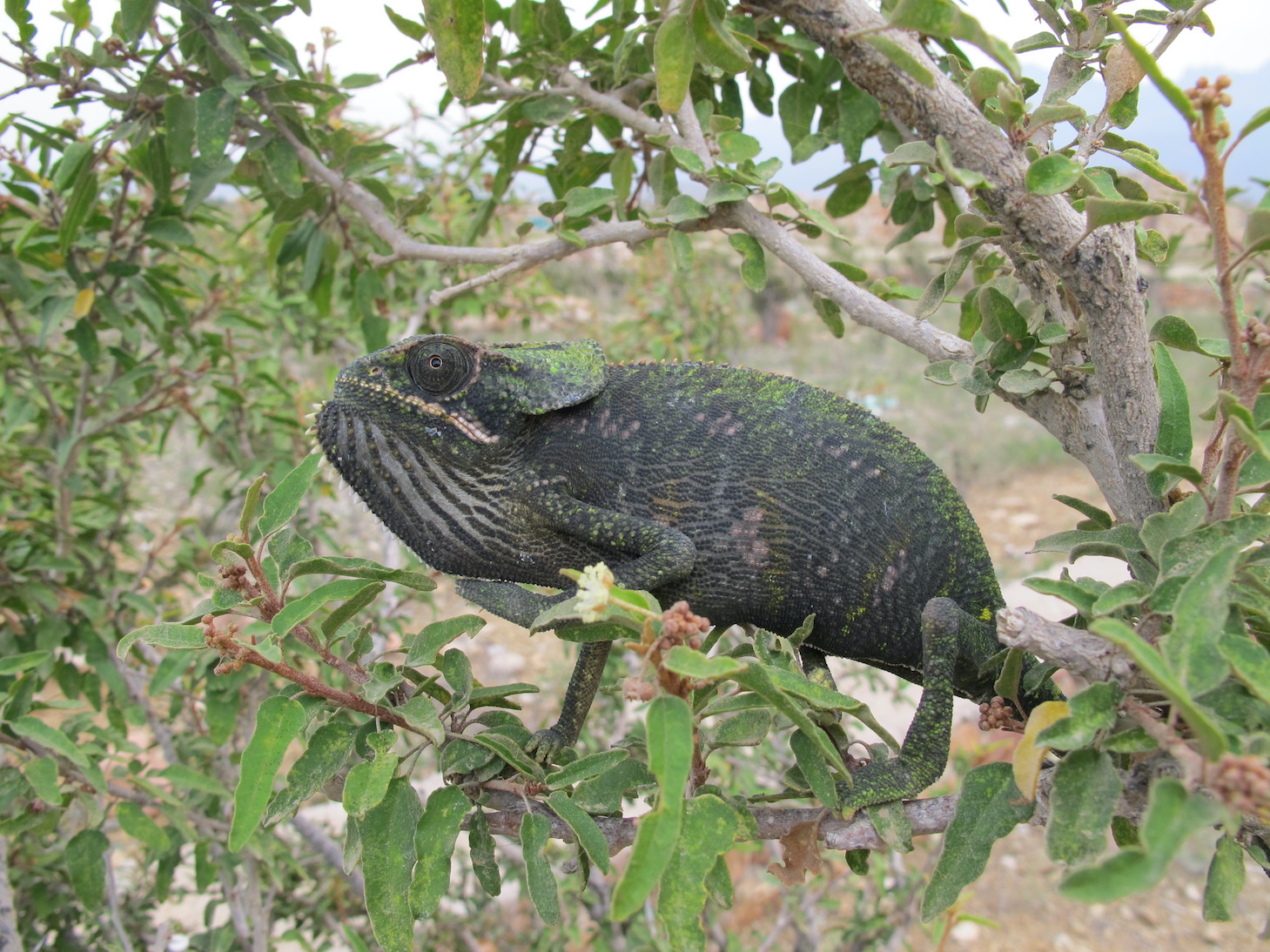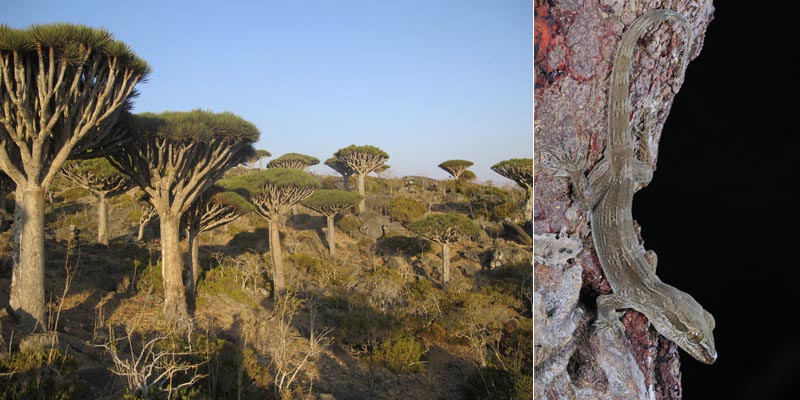🇬🇧 Unexpected cryptic diversity in Socotra’s reptiles (06/2016)

A study led by researchers from the Spanish National Research Council (CSIC) finds that over 50% of the reptile species in the archipelago of Socotra could still be undiscovered.

Chamaeleo monachus, one of the reptile species from the Socotra Archipelago. Author: Salvador Carranza.
Astonishing biodiversity
Located in the north-west Indian Ocean and comprising four small islands, Socotra (a governorate of Yemen) is considered one of the most difficult to access and distinct archipelagos in the world. Regarded as the “jewel” of biodiversity in the Arabian Sea, the Socotra Archipelago was designated a UNESCO World Heritage Natural site in 2008 because of its high level of endemic species. The long isolation period from continental Arabia (≈ 20 million years ago), together with its topography and its high ecological and climatic diversity, have given rise to exclusive and spectacular endemic fauna and flora found nowhere else on Earth. Biological field surveys have counted nearly 700 endemic species, including 35% of its 825 plant species and 95% of its more than 100 land snail species.
Despite the richness and uniqueness of Socotra’s biodiversity, increasing and insufficiently controlled human activities (e.g. cattle and sheep farming, introduction of exotic species, unsustainable exploitation of resources, and infrastructure and tourism development) pose a serious threat to the long-term conservation of its unique biodiversity.
Tool for conservation
With few endemic mammal or bird species and no endemic amphibians, reptiles constitute the most relevant vertebrate fauna of Socotra with 31 presently recognized species, 29 of which are endemic (94%). Due to their abundance in Socotra, reptiles constitute a keystone group in the trophic system, both as insect predators and as prey for birds. Moreover, some species have strict associations with specific habitats, as in the case of the endemic gecko Hemidactylus dracaenacolus, which is found only on the endemic Dragon’s blood tree (Dracaena cynnabari); both species are critically endangered. In this regard, the construction of a DNA-based reference library for all reptiles of the Socotra Archipelago can serve as an integrative tool for monitoring its biodiversity.
“...increasing and insufficiently controlled human activities... pose a serious threat to the long-term conservation of its unique biodiversity”

The endemic gecko Hemidactylus dracaenacolus (right, author: Fabio Pupin) is only found on the endemic Dragon’s blood tree, Dracaena cinnabari (left, author of the picture: Salvador Carranza). Both are critically endangered species.
Since 2007, a team led by Salvador Carranza (senior researcher at the Institute of Evolutionary Biology in Barcelona) has conducted several expeditions to Socotra in order to collect reptile samples (1 mm of tail tips) from all of the currently known localities. They have successfully sequenced a 663bp region of cytochrome c oxidase 1 (COI) for 380 individuals, representing all currently recognized reptile species in the Socotra Archipelago.
The results of this research will be very useful for monitoring reptile biodiversity in Socotra and establishing conservation priorities. “Our main goal was to generate DNA barcodes for all Socotran reptiles, and so provide a valuable tool for quick specimen identification by airport / port authorities. However, we also found unexpectedly high levels of cryptic diversity within the reptiles of the Socotra Archipelago” said Salvador Carranza.
Cryptic diversity
The study, published in PLoS ONE in March, claims that up to 54% of the reptile species in Socotra might still be undescribed. “Considering that currently a third of Socotran reptiles are threatened, the results of our work could have major implications for species conservation” adds Raquel Vasconcelos, postdoc researcher at the CIBIO-inBIO, Portugal.
Although short-length markers such as COI are often time- and cost-effective proxies for specimen identification and species discovery (especially of cryptic species), they frequently are not representative of the full evolutionary history of species. “We propose that the taxonomy of Socotran reptiles should be revised using an integrative framework incorporating multiple loci, morphology, and ecological data” commented Santiago Montero-Mendieta, currently a PhD student at the Estación Biológica de Doñana, Seville.
---
Original publication:
Vasconcelos, R.*, Montero-Mendieta, S.*, Simó-Riudalbas, M., Sindaco, R., Santos, X., Fasola, M., Llorente, G.A., Razzetti, E., Carranza, S. (2016). Unexpectedly high levels of cryptic diversity uncovered by a complete DNA barcoding of reptiles of the Socotra Archipelago. PLOS ONE, 11(3): e0149985. https://doi.org/10.1371/journal.pone.0149985
* These authors have made contributions that are regarded as equally significant, although the extent of equality may be subject to varying interpretations.
